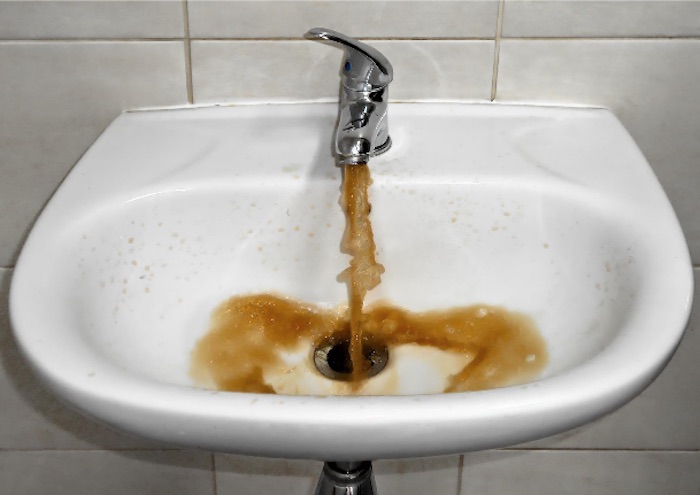Also Interesting
What Can Be Expected if the First Nations Water Class Lawsuit Isn’t Handled Out of Court?

The First Nations water class lawsuit is a legal case in which two First Nations, Tataskweyak and Neskantaga, sued the federal government of Canada.
The two First Nations argued that they had not received equitable treatment with respect to their right to clean, potable water. They also alleged that the federal government did not live up to its fiduciary duty concerning the rights of the indigenous people.
The lawsuit was filed in November 2016, but it wasn’t until July 2021 that the Canadian federal court in Ottawa approved an agreement reached between the complainants and the federal government agreed to pay $8 billion towards settling the case.
Understanding a Class Action Lawsuit
A class action lawsuit is a combination of lawsuits where the parties involved (class members) unite against a defendant for common harm suffered due to the defendant’s negligence.
However, the harm doesn’t have to have an equal measure for all the class members.
The only requirement is that the circumstances surrounding the resulting harm be the same. In other words, different class members can suffer different harmful outcomes for the same actions.
For example, consuming contaminated water could cause cancer in one group and gut-related illnesses in another. Under such circumstances, the two groups can belong to the same class against the defendant, but the value of their compensation could differ.
What the Ruling Means to Class Members
Following the ruling, the federal government agreed to pay $8 billion to the communities and individuals who suffered harm due to the federal government’s negligence. Persons that originally registered in the class may not have to register again.
But other people that want to be part of the class but were not original members have until March 2023 to register and December 22, 2022, for communities.
The largest chunk of the settlement funds will go into developing infrastructure that will ensure that the communities have access to clean drinking water.
Also, eligibility is limited to persons that lived in the first nation area from November 20, 1995, to June 20, 2021. Also, a claimant must be a member of any First Nation. By agreeing to take the offer, the members of the class lawsuit give up their right to hold the federal government liable for any damages suffered during the period, but they can still retain the right to sue for harm caused by drinking water after June 2021.
What If the Case Didn’t Settle Out of Court
When the court had to approve the agreement between the federal government and the members of the first nation’s lawsuits, the agreement was reached out of court, which is the case for most tort cases. Had the government chosen not to offer compensation, the case would have had to go through a trial.
By agreeing to go to trial, both the claimant and the defendant would have to trust the strength of their case to produce the results they hope to get. Often most parties will agree to cede some ground to avoid the unpredictability of a trial outcome that the court determines.
Learning From Other Class Action Lawsuits around the World
The First Nation water class lawsuit is not the first in the world. Similar cases have been filed in other parts of the world, for example, Camp Lejeune in the USA.
For years, Camp Lejeune water contamination victims had been locked out of compensation through a legal technicality until congress passed laws allowing leeway to recover damages for damages from exposure to cancer-causing contaminants.
Several studies on the water linked bladder cancer to Camp Lejeune water contamination, with the main contaminant in the water being PCE, a chemical used in detergents and a known carcinogen.
Some First Nations Not Part of the Class
Not all first nations were included in the settlement because their approach to the case differed slightly from the others.
These nations reserve the right to pursue their compensation even as other groups recover damages from their settlement. These first nations are Tsuu T’ina, Sucker Creek, Ermineskin Cree, Blood Tribe (Kainai ), and the Okanagan Indian Band.
Also Interesting
Blue Jays Keep The Hot Stove Burning After Massive December Moves

The Toronto Blue Jays are certainly keeping things interesting this winter. While the calendar might say late December, the front office shows no signs of slowing down. They have already made waves across MLB with some massive acquisitions earlier in the month.
Rather than packing it in for the holidays, the management team is seemingly working overtime. Their goal is to build a roster that can truly compete for a championship in 2026.
Although there are no more signing announcements for the end of the year, the silence is likely temporary. Reports indicate that the team is actively pursuing several more roster improvements before the new year begins.
A Rotation Built To Dominate
The team made their intentions clear in early December. They successfully signed Dylan Cease to a massive seven-year, $210 million contract. This deal, which became official around December 8, instantly transforms the Toronto rotation into one of the strongest in MLB.
Moreover, they did not stop with just one big arm. The front office added significant depth by bringing in KBO MVP Cody Ponce on a three-year deal worth $30 million. This gives the team a level of stability that was missing in previous seasons.
With such dramatic changes to the roster, fans might be looking for a clear overview of licensed Ontario sportsbooks to understand how these moves have impacted the team’s championship odds. It is certainly a different looking team than the one that ended the last season.
Targets for the Bullpen and Lineup
It seems that the focus has now shifted from the starting rotation to other needs. Agents around the league note that the Jays remain “everywhere” in trade talks. The priority is now on finding high-leverage arms and position players to round out the squad.
The front office is reportedly looking at several specific targets:
- Robert Suarez is a primary target to help lock down the late innings.
- Luke Weaver is being considered to add veteran versatility to the staff.
- Depth pieces for the lineup are being sought to support the core hitters.
- Internal extensions remain a key part of the winter strategy.
Due to the heavy spending on Cease and Ponce, these next moves will likely be strategic. The team is looking for the right fit to complement their new stars.
The Future of the Infield and Management
Conversations are actively continuing with free agent Bo Bichette. Bringing him back is a major topic of discussion among the fanbase, even if no deal is imminent yet. Furthermore, the team has been linked to prospect Kyle Tucker, suggesting they are keeping an eye on the future as well as the present.
Manager John Schneider has also expressed optimism regarding his own contract extension. However, he made it clear that building the team comes first. Therefore, while the heavy lifting might seem done, the work continues behind the scenes.
To be sure, the MLB offseason is long. But the Toronto Blue Jays have started fast, and they seem determined to finish strong.
Also Interesting
BCU Financial: A Trusted Credit Union for the Ukrainian Community in Canada

We wanted to know what to do if you came to Canada for temporary or permanent residence. Many Ukrainians have arrived in the country, and many don’t know where to begin their financial journey. People often turn to traditional banks, where they encounter problems due to a lack of language skills and basic understanding of Canadian financial processes. We found an alternative – a credit union in Toronto. Today, we’ll look at one of the most well-known and learn more about what they have to offer Ukrainians.
What is a Credit Union in Toronto
These organisations differ from the typical bank for Ukrainians. They offer more flexible conditions, convenient online management, and a personalised approach.
However, these organisations are just as safe and reliable as banks. Let’s look at reliability using the example of the well-known BCU Financial:
- With over 70 years on the market. This credit union in Toronto has a dedicated client base with decades of experience.
- Extensive experience. Indeed, over more than 7 decades, its specialists have become experts in financial matters.
- Branches available. You can visit the office for face-to-face interaction.
- Active in the social life of the Ukrainian community. Buduchnist Credit Union provides financial support to schools, churches, and communication centres for Ukrainian newcomers.
As you can see, such companies have stability and experience. Now let’s look at how they differ from banks in financial matters.
Ukrainian Credit Union Toronto: Differences from a Traditional Bank
Firstly, such organizations welcome a personalized approach to Ukrainians. They are more flexible when it comes to obtaining a loan. Newcomers in Canada are working on receiving a good credit history. Banks always request one when reviewing a loan application.
Secondly, you can receive advice in your native language. Most Canadian banks don’t have multilingual consultants and respond only to inquiries in English or French. If, for example, you need help with a scholarship card, you’ll have to call a translator.
Third, you’ll get more flexible and understated banking for Ukrainians. It includes the ability to submit an app online. It provides such services as ordering credit cards, applying for a loan, or opening an account.
Conclusions
Credit unions are much easier for Ukrainians to work with. They speak your language, can provide advice on finances and their specific needs in Canada, and offer flexible terms. They also provide full-fledged online banking, so familiar to Ukrainians. You also become part of the community because, as a credit union member, you are, to a certain extent, its co-owner.
-

 International2 days ago
International2 days ago“Captured and flown out”: Trump announces dramatic capture of Maduro
-

 International2 days ago
International2 days agoTrump Says U.S. Strike Captured Nicolás Maduro and Wife Cilia Flores; Bondi Says Couple Possessed Machine Guns
-

 Energy2 days ago
Energy2 days agoThe U.S. Just Removed a Dictator and Canada is Collateral Damage
-

 International2 days ago
International2 days agoUS Justice Department Accusing Maduro’s Inner Circle of a Narco-State Conspiracy
-

 Haultain Research1 day ago
Haultain Research1 day agoTrying to Defend Maduro’s Legitimacy
-

 Business2 days ago
Business2 days agoVacant Somali Daycares In Viral Videos Are Also Linked To $300 Million ‘Feeding Our Future’ Fraud
-

 International2 days ago
International2 days agoU.S. Claims Western Hemispheric Domination, Denies Russia Security Interests On Its Own Border
-

 Daily Caller1 day ago
Daily Caller1 day agoTrump Says US Going To Run Venezuela After Nabbing Maduro



